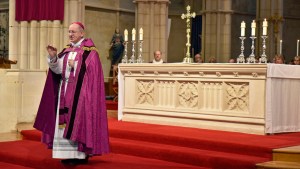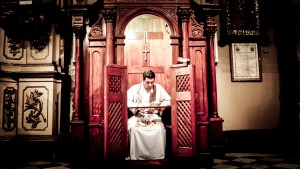Lent wasn’t part of the liturgy of the Church in the very earliest years. The season and the practices associated with it have developed over time.
However, this development did start very early on. The Church quickly saw a need for a final time of preparation for catechumens desiring to be baptized at the Easter Vigil.
Preparation before baptism
In the early Church most converts were adults, and in order to be baptized into the Christian faith, they had to undergo a rigorous period of preparation. It could take several years before an individual was permitted to be baptized, as the Church wanted to ensure that the person was spiritually ready for such a radical life change.
After a long period of instruction in the Catholic faith and a thorough examination, according to the Catholic Encyclopedia, “their names were inscribed among the competentes; i.e. those seeking to be baptized.”
This meant they were on the “home stretch” before baptism, but there was one last period of preparation. Lent “was the time when the three-fold preparation — instructive, ascetical, and liturgical — was carried on. The ascetical preparation was severe. Prayer and fasting naturally formed part of it; but the competentes were also exhorted to keep silence as far as possible … [and] Confession was also enjoined.”
In imitation of this period, the Church has recently instituted a similar stage in the Rite of Christian Initiation for Adults called the “Period of Purification and Enlightenment.” The Association for Catechumenal Ministry explains what is involved in this final stage.
During the period of purification and enlightenment, the focus becomes a stronger emphasis on the spiritual and mystical life in preparation for the sacraments. The guidelines for this period (which normally coincides with Lent) as well as the rites associated with them, enable catechists to shift the focus of teaching from an exposition of the Deposit of Faith to reflection and meditation. Before they receive the sacraments of initiation, “the elect must have the intention of achieving an intimate knowledge of Christ and His Church, and they are expected particularly to progress in genuine self-knowledge through serious examination of their lives and true repentance.”
For these reasons Lent became a time of spiritual preparation and was associated with a number of penitential disciplines, exhorting the catechumens to divorce themselves from a life of sin in order to adopt a new life in Jesus Christ. Eventually it became a season for all of the faithful to prepare for Easter.
Lent continues to have this spirit of spiritual purification today, and even if a person is not preparing for baptism at the Easter Vigil, they are encouraged to take this time to look into their hearts and see if they are truly ready to live out their Christianity to the fullest.

Read more:
These powerful exorcisms are performed in parishes every year

Read more:
How to go to confession, a step-by-step guide

